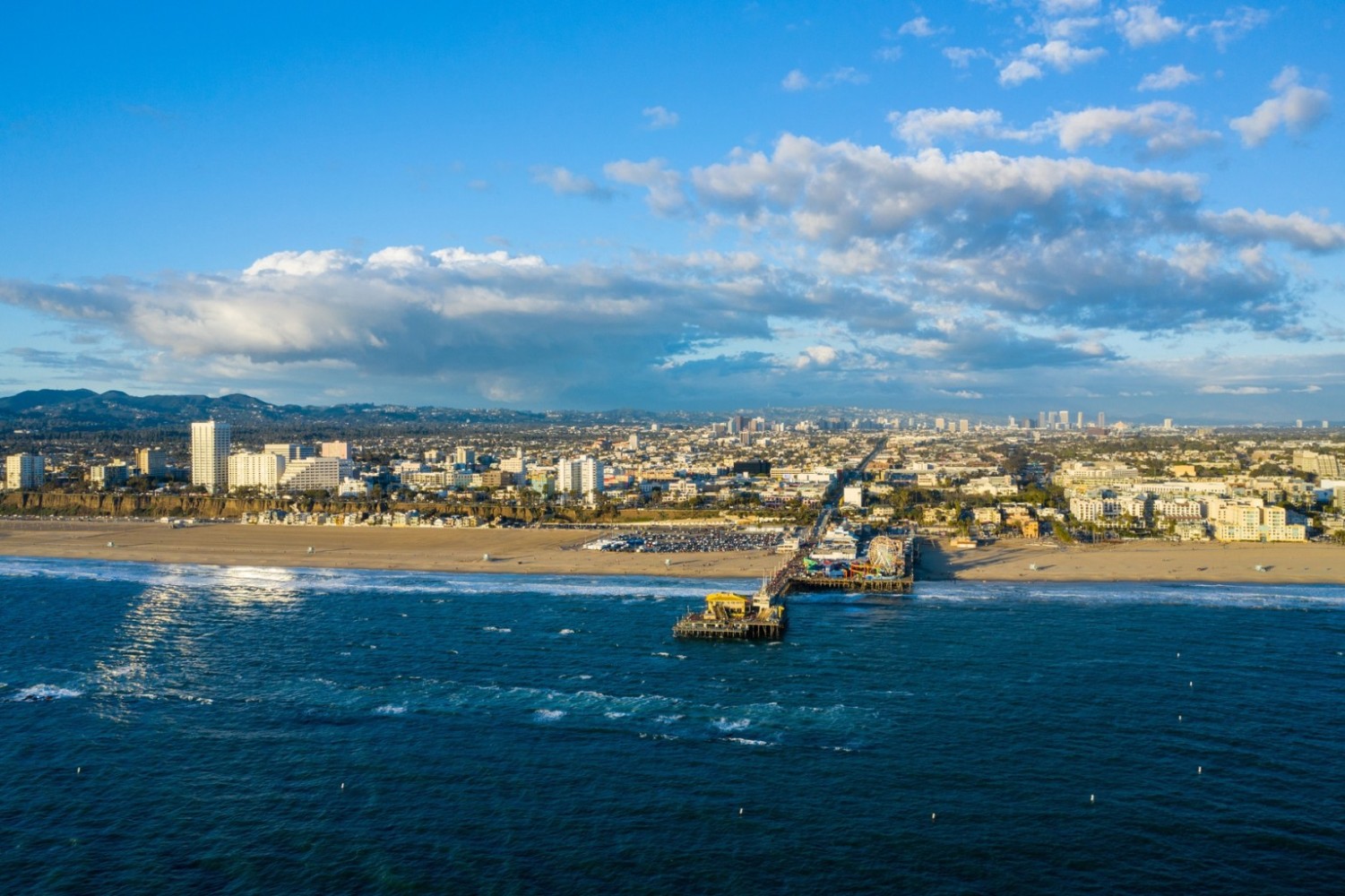
Santa Monica is known for its ocean views, sunny skies, and strong environmental values. But there’s a challenge on the horizon that could test the city’s priorities: water. If Santa Monica follows through on California’s state housing requirements, which call for tens of thousands of new homes, the city’s water supply will not be able to keep up. That could mean building something the city and its neighbors have never had before: a desalination plant. And powering it might require making some tough decisions, possibly even considering nuclear energy, something many local environmentalists have long opposed.
More People, More Water:
Right now, Santa Monica gets most of its water from a local underground source called the Santa Monica Basin. The city has worked hard to reduce its dependence on imported water and is proud of its progress toward water self-sufficiency. But here’s the catch: that aquifer has limits. It only holds so much water, and it can only refill so fast, especially during drought years.
If Santa Monica builds all the new homes required by the state, it will mean tens of thousands more people living here (or even more), using water for everything from showers and toilets to cooking and gardening. Even with continued conservation and recycled water programs, the city just doesn’t have enough natural supply to keep up. That’s where desalination, turning seawater into drinking water, starts to look like a real option.
Desalination Needs a Lot of Power:
Desalination sounds great in theory: endless ocean water, cleaned and ready for use. But there’s a big catch: it uses a lot of energy. You need powerful pumps and filters to remove the salt, and those machines have to run 24/7.
Santa Monica has committed to clean energy goals, so running a desalination plant on fossil fuels would go against everything the city stands for. Solar and wind are part of the solution, but they’re not always available when you need them. The sun doesn’t shine at night, and the wind doesn’t blow on demand. Batteries can help, but storing that much energy is expensive and complicated.
Enter: Nuclear Power (Wait, What?):
Here’s where things get tricky and highly controversial. Nuclear power could actually be one way to run a desalination plant. It’s carbon-free, steady, and powerful. Newer technologies, like small modular reactors (SMRs), are designed to be safer and more flexible than older nuclear plants. If California continues developing this kind of clean, reliable energy, it could provide the right match for large-scale desalination.
But nuclear power is an extremely sensitive topic, and for good reason, especially among environmentalists. Many have spent decades opposing it because of safety concerns, radioactive waste, and the high cost of building plants. Even with improved technology, nuclear still raises tough questions. And the new small modular reactors have not yet proven to be economically viable or even safe.
A Dilemma for Local Environmentalists and Housing Advocates:
That threatens to put Santa Monica’s environmental community in a real bind. On one hand, they want to support housing, fight climate change, and make the city more resilient. On the other hand, they’ve long stood against nuclear power.
If solar and wind alone can’t reliably power a desalination plant, and fossil fuels are off the table for climate reasons, nuclear might be the only option left. That means environmentalists, residents, and city leaders may have to ask themselves a hard question: are we willing to rethink nuclear energy in order to solve an urgent water and housing problem?
What Comes Next?:
Santa Monica’s future will be shaped by how it handles this intersection of water, housing, and clean energy. If the city builds more homes, and it probably will, it will also need more water. A desalination plant might become essential. And figuring out how to power that plant without harming the planet could lead to extremely difficult but necessary conversations. These conversations aren’t really happening yet, but the issue can’t be ignored for much longer. It needs to be addressed soon.
This is more than a local issue, it’s a glimpse into the kinds of choices many communities may face as we try to live more sustainably in a changing world.Daniel Jansenson, Architect, Building & Fire-Life Safety Commission
Santa Monica Architects for a Responsible Tomorrow:
Mario Fonda-Bonardi, Architect AIA (ex-Planning Commissioner), Jack Hillbrand, Architect AIA, Landmarks Commission, Matt Hoefler, Architect NCARB, Dan Jansenson, Architect, Building & Fire-Life Safety Commission, Michael Jolly, AIR-CRE, Thane Roberts, Architect, Robert H. Taylor, Architect AIA, Sam Tolkin, Architect, Planning Commission, Phil Bro













